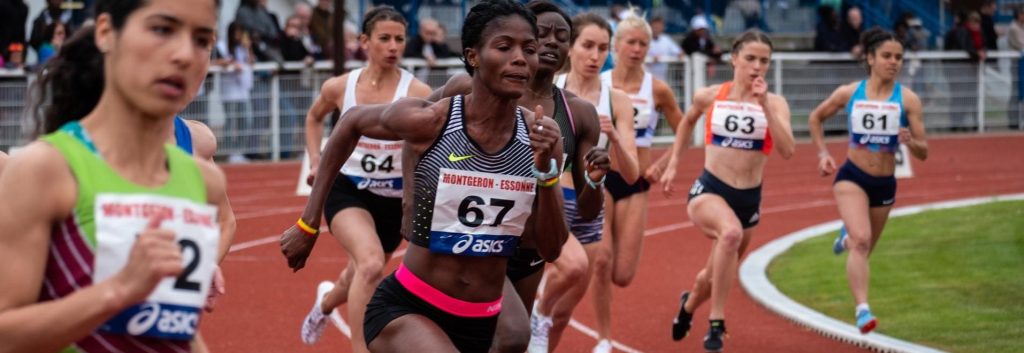The Olympics are – finally – here. As this is perhaps the most different of all Olympics, it is worth reflecting on how recent events have informed and continue to inform a new “manual” for scaled event sponsorships.
Covid of course has changed just about everything for the event, the athletes, the spectators and Olympic sponsors, with all aspects of their programs impacted. Many of the changes have accelerated trends that were well underway pre-Covid. And there is another set of “new normals” just beginning, the impact of which will be felt in future Olympiads and other mass events for years to come (think diversity & inclusion and the environment, digital platforms, the ditching of “Rule 40”, etc.).
We asked our team of Flock consultants to give their assessment for sponsoring scaled events like the Olympics going forward. The team have over 300 collective years of practical sponsorship experience working on brands like Nike, Adidas, Visa, Coca-Cola, AB-Inbev, Toyota, PlayStation, Carlsberg, Sony and McDonalds. We conduct sponsorship assessments using our proprietary evaluation model and advise on how to make sponsorships work for the consumer, sponsors, and event organisers.

Our top ten recommended actions are listed below:
Trends that impact (Olympic) sports audiences (targeting, messaging, media):
1. Activate around fans interests. The adage that the event itself is the tip of the iceberg or 20% of the cost of the full program has never been more true. To get the best from the Olympics, a lot more time and effort must go into activation vs simple title sponsorship. The more enlightened sponsors have pivoted programs and budgets to sales and brand equity driving activation vs on-the-ground presence. Respondents to the 16th annual IEG/ESP Properties Sponsorship Decision-Makers Survey said they spend an average of $2.20 on activating sponsorships for every $1 spent on rights fees. This is a trend that has been going on for a longer time and is accelerating due to little “on the ground” activation being possible in Tokyo this time around. As you think about your sponsorship rights, emphasize the ability for activation in store, online and with partners (retailers, sellers, influencers, etc.). This is a complex practice as rights get more and more divvied up across more and more rights holders and niches, meaning that it pays to be explicit and clear in your contracts as to what is yours (and is therefore harder to ambush or co-habitat by others).
2. Authentic Role and Grassroots Relevance. Find the authentic reason and role the brand can actively play to support the event. For some brands this is easy (sports apparel, sports drinks), for others much harder. It is interesting to see that a lot of (Olympic) sports sponsors now include a focus on “how the athlete got there” with the help of school, parents, nutrition, mental help, etc. Another way is to engage not just with “stars” but at all levels of sports (or other event) – enabling or supporting causes that deliver local value.
3. Diversity, Inclusion and Authentic Representation must be fully baked into any successful sponsorship (and is an Olympic ideal). This is most clearly demonstrated through the stars that are chosen to be the faces and voices of campaigns but can be equally demonstrated through choices in director, production companies, event caterers, hosting companies, etc.
4. Sustainability will be an important and growing component of any sponsorship. The eco-footprint of the event, athletes that make choices in support of sustainability, requirements by sports organizers or athletes around carbon footprints in venue or through travel: these are all areas that are becoming “normal”. We have seen an example this year of an Olympic athlete who is vegan, and she did not want to engage with a certain sponsor who was signed by the local Olympic committee. If you want to be on the front foot, your approach to sports sponsorship should already include your ideas on how to manage these areas.
5. Engaging Younger Fans, Social Media and eGaming. Many major sports events are trending older and older. Companies risk missing the next generation unless they engage younger audiences on their terms, via their media, and engage appropriately. Luckily, most sports organizations are now more pro-actively seeking younger audience engagement opportunities meaning that making it part of your strategy is a must.
6. Engage your internal audience. Developing internal programs for employees and brand ambassadors to leverage the sponsorship property is arguably as important as the consumer strategy is. There are myriad opportunities to build employee or commercial/seller engagement programs that have a proven track record to really move the needle for your sales or business profile.
7. Engaging throughout the sponsorship cycle, not just the event. The best Olympic sponsors understand that the Olympics are not a quadrennial event. They are, in fact an opportunity for a four, or even two-year daily program (four in case of Summer Olympics or Winter Olympics only, but a 2-year cycle if you are involved in both). Smart sponsors engage with the event and the key players on an on-going basis. This not only is a more cost-effective way to build on your event or athlete relationship; it will also make your actual Olympic activation during the event far more successful as you will be building from an existing foundation.
8. Production/PR/content. Major events like the Olympics are story and content fountains. The best sponsors have content factories/newsrooms that can create and publish content instantly, at volume. The old days of having your hero TV ad, some digital assets, and a bit of social are gone. New production providers, new processes for approval, new technology, and instant data analysis are the name of the game. And don’t forget to “unleash” your athletes or sports organization’s social media and other relevant channels. Many are very smart content creators that can help build and emphasize engagement. Their channels usually carry more authenticity and credibility than most “official media partners”. Expect this to grow strongly, as the famous “Rule 40” was taken down because of the German anti-competitive court ruling. Olympians will for the first time be able to appear in personal sponsors’ ads and congratulations content. They are also allowed new personal sponsors for the first time, and athletes will get to shout out to their personal sponsors during the Games. Social media posts will no longer carry the threat of sanctions ranging from stripped medals to fines to disqualification.
Trends that impact (Olympic) sponsor success (implementation, measurement):
9. Evaluation and ROI. You will need to have a set of KPIs that evaluate the sponsorship property comprehensively. For a complete ROI picture, you will need to assess both hard value components (i.e. exposure through a variety of media, sales driven by channels whose audience was generated through Olympic publicity, etc.) as well as actual “on the ground” value (stadium and athlete presence). Next to that are soft value components (can you track how sponsorship drove brand equity vs those not exposed or interested? What did it do for recruitment of personnel, retention of your star performers, morale among employees and stakeholders, etc.?). All of these combined add up to value delivered. To contrast the value components, don’t forget that sponsorship ROI should cover all investments: (1) sponsorship cost; (2) sponsorship activation cost (in venue, road shows, etc.); (3) sponsorship media cost; (4) sponsorship marketing activation cost (packaging, instore media, etc.), (5) any other creative production cost. Include agency or in-house team cost in all of these as well.
10. Flexibility. If we have learned anything from the COVID disruption to date, it is the need to make quick decisions and implement quick changes. The nimbleness to react to stories, wins, losses, scandals, and of course covid or other threats, has meant marketing teams, programs and budgets need to be structured differently. Are you set up to deal with sudden withdrawals from your star athlete due to illness or scandal? Are you ready to assess if – like Toyota did in Japan – you want (or need) to pull ads in a certain market, and do you have a plan B for that media plan? What is your plan for scandal escalation?
a
Sports and mass event sponsorship is hard work. And especially around big events like the Olympics, your marketing ecosystem (your teams, your agencies) will need to perform at Olympic levels. It is hard work, but as with all sports: training and preparation usually pays off.
If you would like to know how to get the right skills in your team, how set up the best processes, set your agencies for success, or harness the power of tech and data to win big at your next Olympics or Mass Event then please contact us below.



